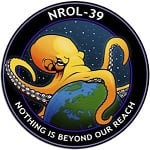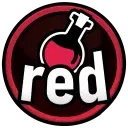Yes
deleted by creator
Selecting not at random, A xor D must be correct, because the answer key can only have one correct answer so even duplicate right answers must also be wrong.
It asked for whether the answer is correct not whether it lines up with the answer sheet.
It’s 0%, because 0% isn’t on the list and therefore you have no chance of picking it. It’s the only answer consistent with itself. All other chances cause a kind of paradox-loop.
I agree with 0% but disagree there’s any paradox - every choice is just plain old wrong. Each choice cannot be correct because no percentage reflects the chance of picking that number.
Ordinarily we’d assume the chance is 25% because in most tests there’s only one right choice. But this one evidently could have more than one right choice, if the choice stated twice was correct - which it isn’t. So there’s no basis for supposing that 25% is correct here, which causes the whole paradox to unravel.
Now replace 60% with 0%. Maybe that would count as a proper paradox. But I’d still say the answer is 0%, it’s just wrong in the hypothetical situation posed by the question rather than the actual question.
Completely agree! In this case there is no real paradox, 0% is a perfectly consistent answer.
I think if you replace 60% with 0%, you’d get a proper paradox, because now there is a non-zero chance of picking 0% and it’s no longer consistent with itself. It’s similar to the “This statement is false” paradox, where by assuming something is true, it makes it false and vice versa.
Correct - even if you include the (necessary) option of making up your own answer. If you pick a percentage at random, you have a 0% chance of picking 0%.
Correct, including 0% as a part of the answers would make 0% a wrong answer.
I asked Google to roll a D4 and it rolled a 4. So my answer (correct or not) when following the directions in the question is the fourth one (D).
This can also be used a great example of proof by contradiction: There is no correct answer in the options. Proof: Assume there was a correct answer in the options. Then it must be either 25%, 50% or 60%. Now we make a case distinction.
(A) Assume it was 25. Then there would be two of four correct options yielding in a probability of 50%. Therefore 50 must be the correct answer. -> contradiction.
(B) Assume it was 50. Then there would be one of four correct options yielding in a probability of 25%. Therefore the answer is 25. -> contradiction.
© Assume it was 60%. Since only 0,1,2,3 or 4 of the answers can be correct the probability of choosing the right answer must be one of 0% 25% 50% 75% or 100%. -> contradiction.
Because of (A), (B) and ©, it cannot be 25, 50% or 60%. -> contradiction.
©
because of copyright?
My client renders this as ( c )
Cheeky answer - the correct answer is a superposition of 25% and 50%, thus you answer it as a multiple choice question
I choose 75%
It’s annoying that 25% appears twice. How about these answers:
a) 100%
b) 75%
c) 50%
d) 0%
That’s why we’re making fun of it though
Granted, it is more fun to have more answers involved, but 2 identical answers immediately gives it away as fake.
deleted by creator
If you’re choosing the answer, then there is 100% chance of being correct. Since none of these answers is 100%, the chance is 0%.
That logic would only hold if I wasn’t dumb as rocks.
🤯
Thanks for making me laugh all alone in my car before heading in to work. I wish I could give you an award. Cheers!
I argue it’s still 25%, because the answer is either a,b,c, or d, you can only choose 1, regardless of the possible answer having two slots.
Yup. And it says pick at random. Not apply a bunch of bullshit self mastubatory lines of thinking. Ultimately, 1 of those answers are keyed as correct, 3 are not. It’s 25% if you pick at random. If you’re applying a bunch of logic into it you’re no longer following the parameters anyway.
You can just say “I don’t understand probability (or the word ‘if’)” next time and save a whole bunch of effort.
If you picked it randomly 100 times, would you be correct only 25% of time despite two choices being the same?
It must be a 50% chance.
But that would mean 50% is correct and…
Correct answer: all the answers in the multiple choice are wrong
Since two of them are the same, you have a 50% chance of picking something that is 33% of the possible answers. The other two, you have 25% chance of picking something that us 33% of the possible answers.
So 50%33% + 2 (33%*25%)= 33%
So your chances of being right is 33% cause there is effectively 3 choices.
But that one answer has a 33% larger possibility of being chosen by random, than the remaining two.
I covered that by multiplying it by 50% as it represents 50% of the choices.
deleted by creator
So then shouldn’t it be 100%?
More like 0%
Or both
What’s the correct value if the answer is not picked at random but the test takers can choose freely?
All answers are correct then.







